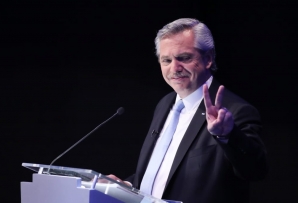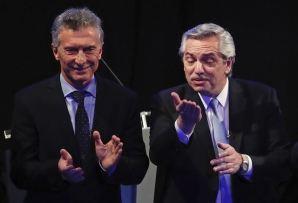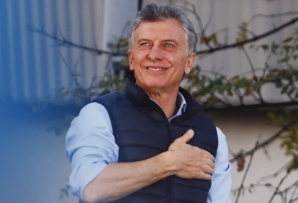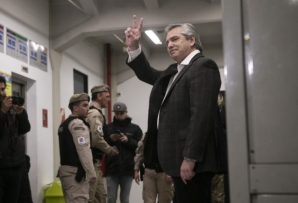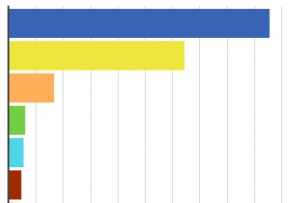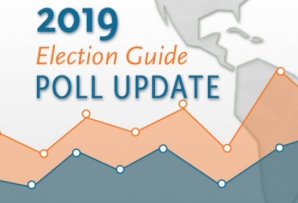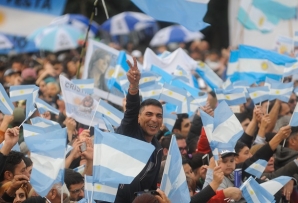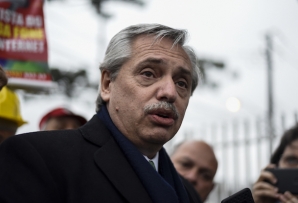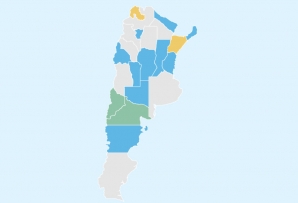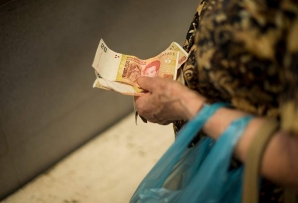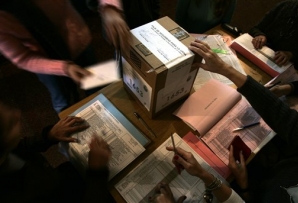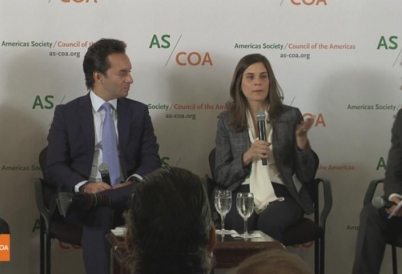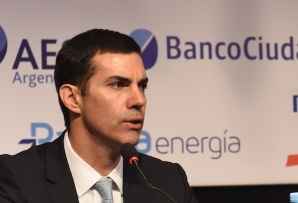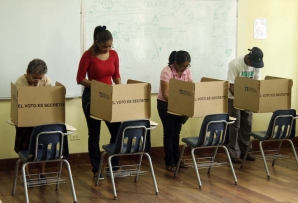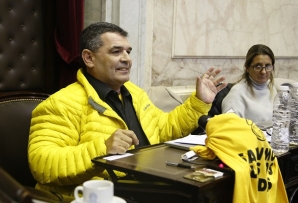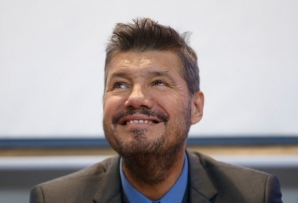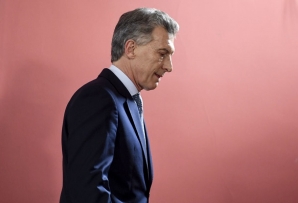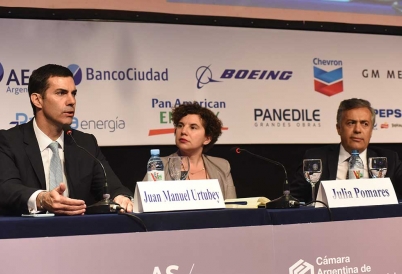A GUIDE TO
A Guide to 2019 Latin American Elections: Argentina
More than 26 million voters participated in Argentina’s October 27 elections, which saw the election of president and vice president, and nearly half of congressional seats (130 deputies and 24 senators). President Mauricio Macri ran for a second term, but Argentines handed Peronist Alberto Fernández a first-round victory. He takes office with Vice President—and also a former president—Cristina Fernández de Kirchner on December 10.
To win in the first round, a candidate needs at least 45 percent of the vote or 40 percent and a 10-point margin over his or her top rival. By earning more than 48 percent, Fernández comfortably sailed to victory, although the nearly 8-point margin between him and Macri was lower than the 15-point difference in August primaries.
Fernández will have an absolute majority in the Senate and his vice president will preside over it. Also, in the lower chamber, the next president's Everyone’s Front coalition will hold a slight majority.
Axel Kiciloff, a minister in Fernandez de Kirchner’s administration, won the influential Buenos Aires province governorship. The Together for Change coalition, meanwhile, held on to the mayorship of Buenos Aires, with incumbent Horacio Rodriguez Larretta winning by a landslide.
>> Find out about other elections in our main 2019 Election Guide.
Share
Alberto Fernández defeated President Mauricio Macri in the first round. Juan Cruz Díaz, Cefeidas Group managing director and AS/COA special advisor, lays out the country’s political panorama.
The October 27 election is coming down to two presidential tickets, and Alberto Fernández is polling ahead of President Mauricio Macri.
Six tickets will compete in the October 27 first round, but the race comes down to Alberto Fernández versus President Mauricio Macri.
Argentina’s president was arguably the greatest hope of liberal technocrats in the region.
Brazil’s 2002 crisis illuminates a way to calm investors, writes a longtime emerging markets economist.
Six tickets made it past the primary to vie for the presidency. The first round takes place October 27.
Nine candidates are competing in the August 11 primary, known as the PASO, but pollsters put rivals Alberto Fernández and Mauricio Macri well ahead of the others.
Argentina’s presidential candidates are already set. But the upcoming PASO could still have a big impact on the race.
How is President Macri polling? And with whom is ex-President Fernández de Kirchner sharing the electoral ticket? AS/COA Online takes a look.
Is the presidential hopeful distancing himself from his running mate?
So far, 15 provinces have held elections. While the peronistas saw one seat flip to another party, they increased victory margins in several others.
Macri and Kirchner are garnering the most attention ahead of Argentina's October vote. But there's room for a dark horse.
Public dissent and legal challenges have slowed implementation of President Mauricio Macri’s 2017 reform.
From gubernatorial PASOs to the first-ever mandatory presidential debates, AS/COA Online outlines key dates ahead of October 27 general elections.
An expert panel in New York agreed the country's economic prospects look to improve in 2019 over the previous year and will be a key factor in October's presidential election.
Argentina’s dark-horse presidential candidate speaks to AQ about his vision for uniting the country.
AS/COA Online takes a look at upcoming presidential races in Argentina, Bolivia, El Salvador, Guatemala, Panama, and Uruguay.
Another controversial maverick hits the campaign trail in Latin America.
A year out from Argentina's election, a familiar face is testing political waters.
Argentina’s president is struggling with an economic crisis. His predecessor is implicated in a huge corruption case. Is there room for another challenger?
Los gobernadores de Salta y Mendoza hablaron de la importancia de la transparencia en la política y en los mercados para la mejoría de la economía argentina.
Cinco miembros del gabinete, dos gobernadores, un alcalde, líderes del sector privado y otros se reunieron durante la decimoquinta conferencia anual de AS/COA en Buenos Aires.







